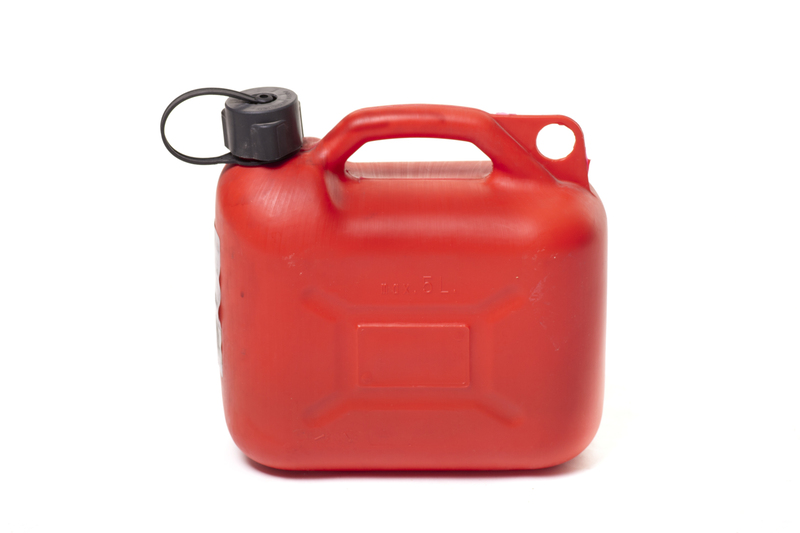How to Protect Your Back While Lifting by Yourself
Lifting heavy objects alone is a reality for many people -- from moving boxes during a house shift to carrying equipment at work or even handling groceries. Regardless of the situation, it's crucial to protect your back while lifting by yourself to prevent injuries that could lead to chronic pain or long-term disability.
In this comprehensive guide, you'll discover how to protect your back during solo lifting tasks, techniques for safe lifting, and the best practices to keep your spine healthy and strong.

Why Is Back Protection Important When Lifting Alone?
The human back, especially the lower back (lumbar spine), is susceptible to injuries when subjected to improper lifting mechanics. Doing so alone increases your risk because there's no one to assist or correct your form. Common injuries include:
- Muscle strains
- Herniated discs
- Sciatica
- Ligament sprains
Did you know? Most back injuries caused by lifting by yourself are preventable with the right knowledge and preparation! By following safe lifting techniques, you can dramatically reduce your risk of pain and injury.
Understanding the Risks of Lifting Alone
Lifting by yourself can put added stress on your back due to:
- Lack of help in stabilizing the load
- Poor body positioning and hurried movements
- Overestimation of your own physical limits
- Failure to take breaks or adjust form
Mastering solo lifting techniques and understanding when to say 'no' is instrumental in ensuring your own safety. Never hesitate to use proper equipment or reposition yourself if something feels off.
Best Practices to Protect Your Back During Lifting Tasks
Follow these steps to keep your back safe while lifting by yourself:
1. Assess the Object and Your Environment
- Test the Weight: Before lifting, nudge the item gently with your foot or hands to gauge its heaviness. If it feels too heavy, ask for help or use a dolly.
- Clear Your Path: Make sure there's nothing in your way that could cause you to trip or turn suddenly while carrying the object.
- Plan Your Route: Know exactly where you're taking the item, and ensure the destination spot is clear.
2. Use Proper Lifting Techniques
To avoid injury and protect your back while lifting alone, use these safe lifting methods:
- Stand close to the load with your feet shoulder-width apart for balance.
- Bend at the knees and hips, not at your waist. Lower your body down to the object, keeping your back straight and chest up.
- Grip the object firmly and keep it close to your body. This reduces the strain on your lower back.
- As you begin to lift, use your legs to push upward, not your back. Your legs are much stronger than your back muscles!
- Keep the object as close to your torso as possible while moving.
3. Keep Your Spine in a Neutral Position
- Don't twist your back while lifting or carrying. If you need to turn, move your feet instead of rotating your torso.
- Maintain the natural curve of your spine by bracing your core.
4. Use Equipment to Assist with Heavy Lifting
- Invest in a dolly, hand truck, or moving straps to distribute the load and save your back.
- If lifting at work, request proper lifting aids or mechanical assistance whenever possible.
5. Take Your Time and Don't Rush
- Move slowly and with purpose.
- Rushing increases the chance of mistakes, leading to improper form or dropping the item -- both of which can cause injury.
6. Set the Item Down Safely
- Reverse the lifting technique by squatting down with your knees and hips, keeping your back straight as you lower the object.
- Never bend at the waist to put something down!
Additional Tips to Safeguard Your Back While Lifting by Yourself
- Warm Up Before Lifting: Even a few minutes of light stretching or walking can get your blood flowing and prepare your muscles.
- Wear Proper Footwear: Closed-toed, supportive shoes provide much-needed stability.
- Don't Overdo it: Avoid trying to lift loads that are too heavy for your current strength. Know your limits!
- Position the Load Properly: If possible, adjust the height of the item so you don't have to bend all the way down or reach up too high.
- Keep Your Core Engaged: Tightening your abdominal muscles gives your spine extra support during the lift.
Strengthening Your Back to Prevent Injuries
One of the most effective ways to protect your back while lifting alone is to build a strong, resilient core and back. Incorporate the following exercises into your fitness routine to reduce the chance of injury:
- Planks and side planks
- Glute bridges
- Supermans
- Bird-dogs
- Squats and lunges
- Back extensions
*Consult with a healthcare provider or physical therapist before beginning a new exercise regimen, especially if you have a history of back problems.
Smart Lifting Strategies: When Lifting Completely Alone
Split Heavy Loads
- If possible, break down heavy items into smaller, more manageable loads.
- Make several trips rather than carrying too much at once.
Use Leverage to Your Advantage
- Slide or roll items where you can, instead of lifting them.
- Use ramps or inclines instead of stairs when possible.
Know Your Limits and Listen to Your Body
- If you feel pain (especially sharp or sudden pain), stop immediately.
- Don't ignore warning signs like muscle fatigue, stiffness, or discomfort.
Utilize Supportive Gear if Needed
- Back support belts can provide extra support for your lower back during intense lifting sessions. However, don't rely solely on belts; proper technique is essential!
Hydrate and Rest Between Lifts
- Keep hydrated, as dehydration can lead to muscle fatigue.
- Rest briefly between heavy lifts to allow your muscles to recover.
Signs of Back Injury: When to Seek Help
Despite all precautions, injuries can still occur. It's important to recognize the symptoms of a back injury early. Get immediate medical attention if you experience:
- Severe pain that doesn't improve with rest
- Numbness or tingling in your legs
- Difficulty standing, walking, or moving
- Loss of bladder or bowel control
- Sudden weakness in your lower limbs
Ignoring pain can convert an easily treatable problem into a serious, long-term issue. Don't take chances with your health!

Frequently Asked Questions on Solo Lifting and Back Safety
What is the best way to protect your back while lifting alone?
Always lift with your legs, keep your back straight, hold the object close to your body, and avoid twisting. If the item is too heavy, use a lifting aid or break it into smaller parts.
Are there specific movements I should avoid while lifting by myself?
Yes, avoid sudden jerks, rotation of your torso, and bending at your waist. Instead, pivot with your feet and move deliberately.
Should I use a back brace when lifting alone?
Back braces can help for certain individuals, but they are not a substitute for proper lifting techniques. Only use them if recommended by a healthcare professional.
What stretches can help after lifting?
- Knee-to-chest stretches
- Cat-Cow pose
- Child's pose
- Gentle spinal twists (if comfortable)
Performing these stretches post-lifting can ease tension and promote spinal flexibility.
Conclusion: Keep Your Back Healthy While Lifting by Yourself
Protecting your back while lifting alone is all about preparation, technique, and awareness. By following safe lifting practices, using your legs and core for strength, utilizing proper equipment, and listening to your body, you can lift safely and avoid unnecessary injuries.
Remember, it's far better to pause and reassess than push through with poor technique. Your back is one of your most valuable assets -- treat it with care every time you lift, whether at home, work, or anywhere else!
Prioritize your spinal health by implementing these tips to protect your back while lifting by yourself, and enjoy a pain-free, active lifestyle for years to come.



